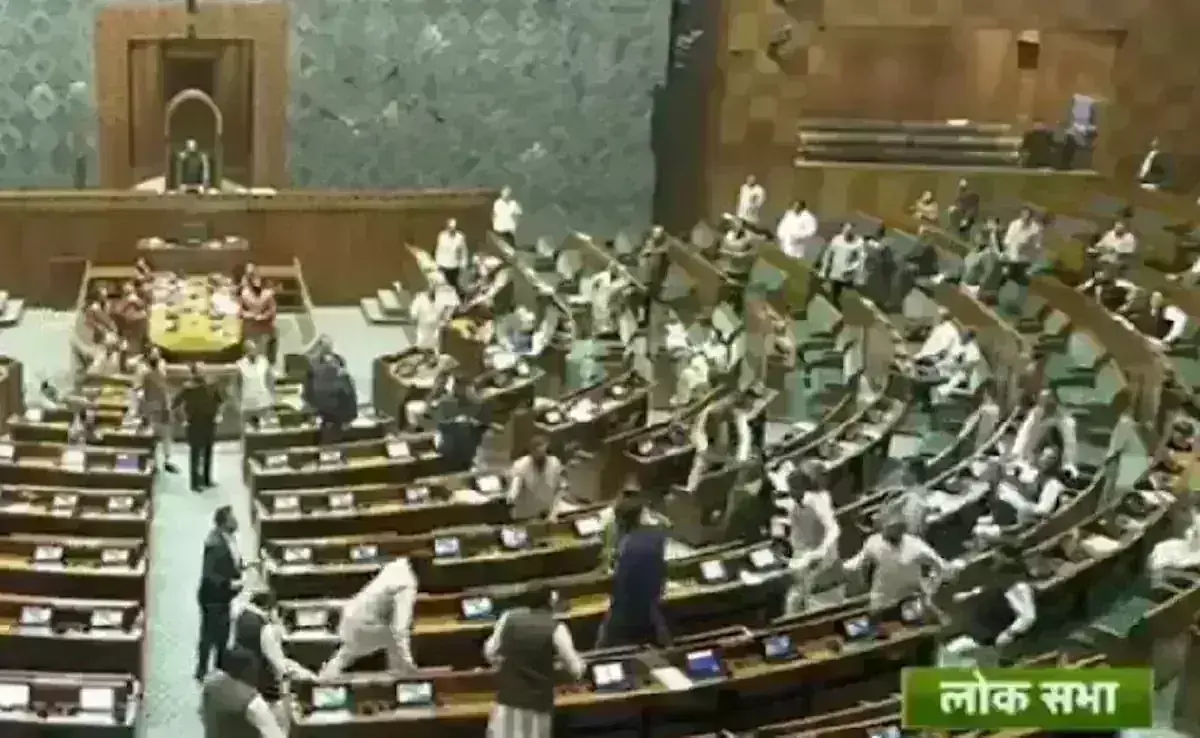Lok Sabha security breach, from smoke canisters to cyber warfare, govt institutions worldwide battle gaps in protocols
Security breaches in government institutions range from physical intrusions to cyberattacks
image for illustrative purpose

Hyderabad: Today being the anniversary of the 2001 Parliament attack, two individuals breached security in Lok Sabha, releasing yellow-coloured smoke from canisters in the visitors’ gallery. They moved across desks, heading towards the House's centre, chanting slogans against dictatorship. These intruders were detained, while two more protesters near Transport Bhavan, Delhi, were also apprehended. A preliminary investigation by Speaker Om Birla deemed the smoke "harmless," assuring no cause for concern, as an ongoing inquiry delves into the incident. Security officials noted the breach involved individuals carrying smoke sticks despite security checks and scanners. The detainees, now held by the Parliament security services, will later be handed over to Delhi police for further investigation and filing of charges.
Security breaches in government institutions globally have been a cause for concern varied in nature and impact. Instances range from physical intrusions to cyberattacks, revealing vulnerabilities and prompting enhanced security measures.
In addition to the incident mentioned at Lok Sabha, there have been notorious breaches in other parliaments or government buildings.
In January 2021, a breach of the U.S. Capitol occurred when a mob stormed the building, interrupting the certification of the presidential election results. This incident prompted concerns about the security preparedness of one of the most iconic government buildings in the United States.
Stuxnet Attack (2010): This cyberattack targeted Iran's nuclear facilities and is considered one of the most sophisticated and impactful cyber warfare incidents. The attack was believed to be a joint effort by U.S. and Israel, using a computer worm to damage Iran's uranium enrichment centrifuges, highlighting the potential for cyber warfare in disrupting critical infrastructure.
Edward Snowden Leaks (2013): Former NSA contractor Edward Snowden leaked classified information, revealing the extent of global surveillance programs operated by the NSA and its international partners. This breach raised serious concerns about privacy infringements and sparked a global debate on surveillance practices.
Government institutions face persistent cyber threats. Cyberattacks aiming to access sensitive information or disrupt operations have targeted government networks worldwide. For instance, ransomware attacks on government systems in different countries have caused disruptions and data breaches, emphasizing the importance of robust cybersecurity measures.
Another concern involves breaches facilitated by insiders with access to sensitive information. These incidents may range from unintentional information leaks to intentional espionage or data theft.
Addressing these breaches often involves a combination of enhanced physical security measures, updated protocols, and staff training on cybersecurity best practices, aided by the use of advanced technologies like biometrics, AI-driven surveillance, and encryption to safeguard government premises and data.
Governments worldwide continuously reassess and bolster security measures to adapt to evolving threats, aiming to maintain the integrity and safety of their institutions. These exercises need continuous vigilance, updated security measures, staff training, and technological advancements to safeguard government premises, data, and critical infrastructure from evolving threats, both physical and digital.

